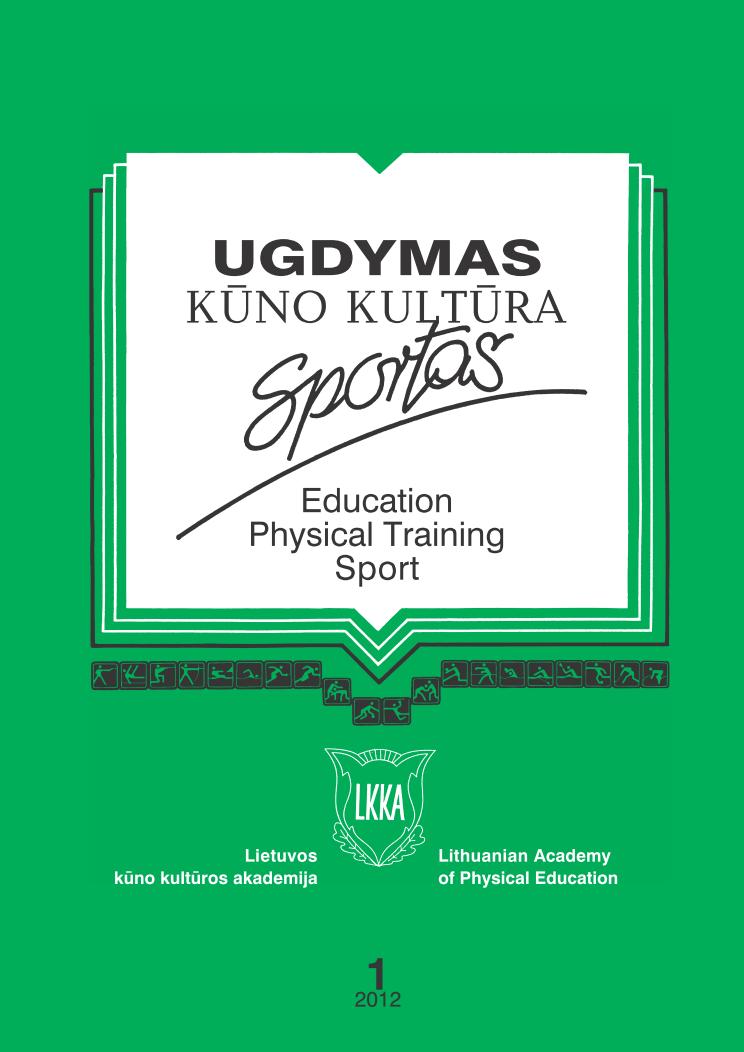The Relationships between Maturation, Physical Activity and Objectified Body Consciousness in the Sample of Adolescents
Abstract
Research background and hypothesis. Although trends of decline in physical activity during adolescence are
determined by most authors, the association of biological maturation with physical activity has not been commonly
studied. It is thought that the effect of changes occurring in adolescent physical activity during maturation may be
associated with psychological factors, for instance, body dissatisfaction.
Research aim was to determine the relationships between maturation, physical activity and objectified body
consciousness in the sample of adolescents.
Research methods. The study comprised adolescents of fifteen 9th forms of Kaunas education institutions
(4 gymnasiums, 10 secondary schools and one main school). The studied sample consisted of 293 schoolchildren, 57
of them did not fill in questionnaires (because of refusal or absence). Thus the data of 236 students were analyzed, 115
(48.7%) of them were boys. Mean age (SD) of participants was 15 (0.38) years, the youngest was 14, the oldest – 16
years old. The anonymous questionnaires were used to determine physical activity, (Leisure-Time Physical Activity
Questionnaire, LTPAQ; Godin, Shephard, 1985) objectified body consciousness (Self-Objectification Questionnaire ,
SOQ; Noll, Fredrickson, 1998) and the sexual maturation level of adolescents (Tanner Sexual Maturation Scale,
SMS; Marshall, Tanner, 1969; Marshall, Tanner, 1970).
Research results. Late maturing adolescents were found only in the group of boys. Slightly more than one-third
of boys and almost one-fifth of girls were early maturing. The analysis of association between the stage of maturation
and adolescent physical activity showed a negative relationship in the group of adolescent boys. The study revealed
that with an increase in sexual maturation stage girls reported higher rate of objectified body consciousness, however,
this trend was not detected in boys. With an increase in maturation stage the rate of drive for thinness grew in girls
and boys. Rates of body dissatisfaction, drive for thinness, objectified body consciousness were higher in adolescent
girls than in boys, however, the rate of exercising was lower. Body dissatisfaction, drive for thinness, objectified
body consciousness were not associated with physical activity in the sample of adolescents.
Discussion and conclusions. The study contributes to the research asserting that sexual maturation is associated
with lower adolescent physical activity, however, it is common only among boys. Objectified body consciousness in
girls and drive for thinness in both genders grow when sexual maturation increases. Rates of body dissatisfaction,
drive for thinness, objectified body consciousness are higher in adolescent girls than in boys, however, their exercising
rate is lower. Body dissatisfaction, drive for thinness, objectified body consciousness were not related to adolescent
physical activity in the sample.
Keywords: maturation, physical activity, objectified body consciousness.
Downloads
Published
Issue
Section
License
Copyright (c) 2018 Baltic Journal of Sport and Health Sciences

This work is licensed under a Creative Commons Attribution 4.0 International License.






